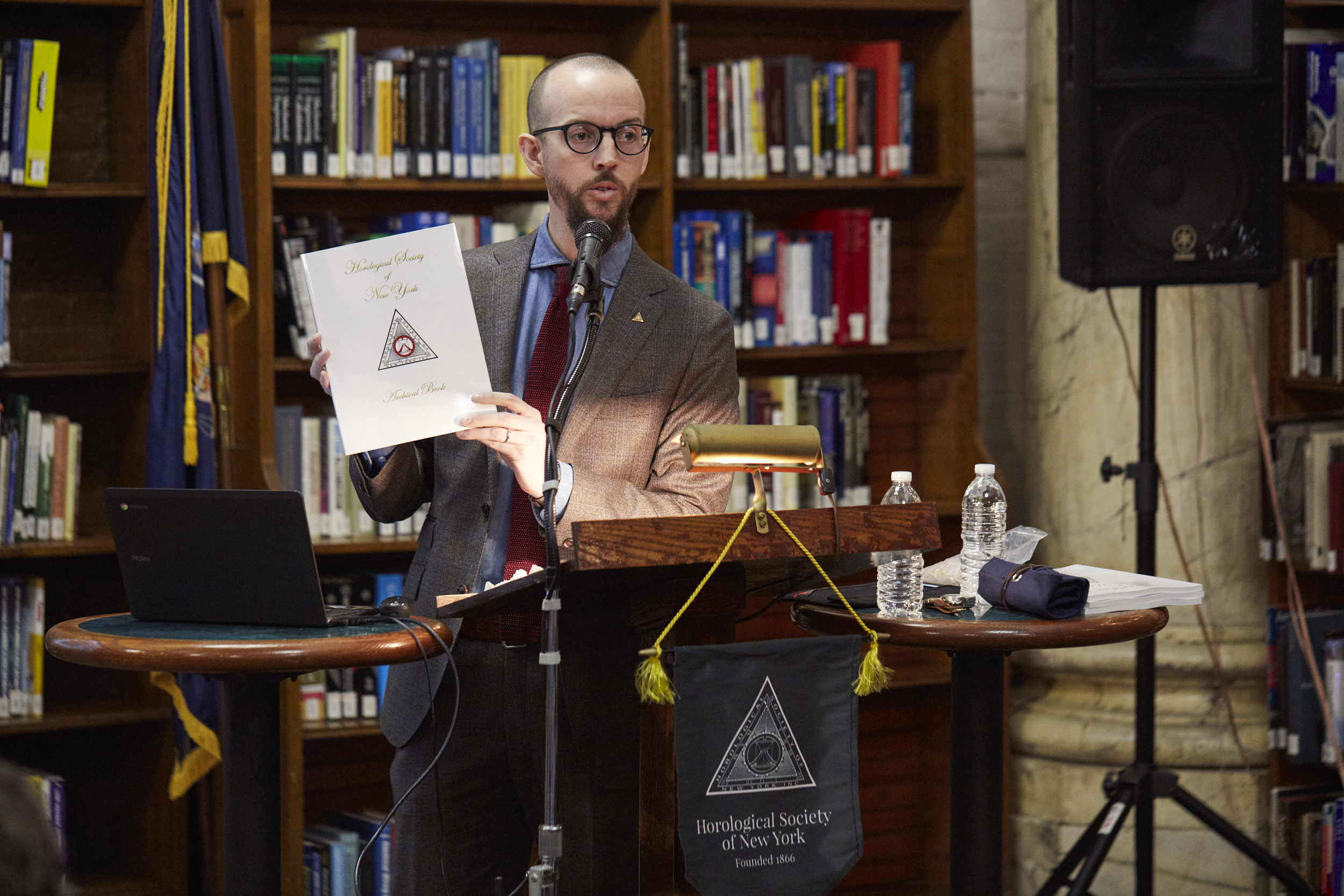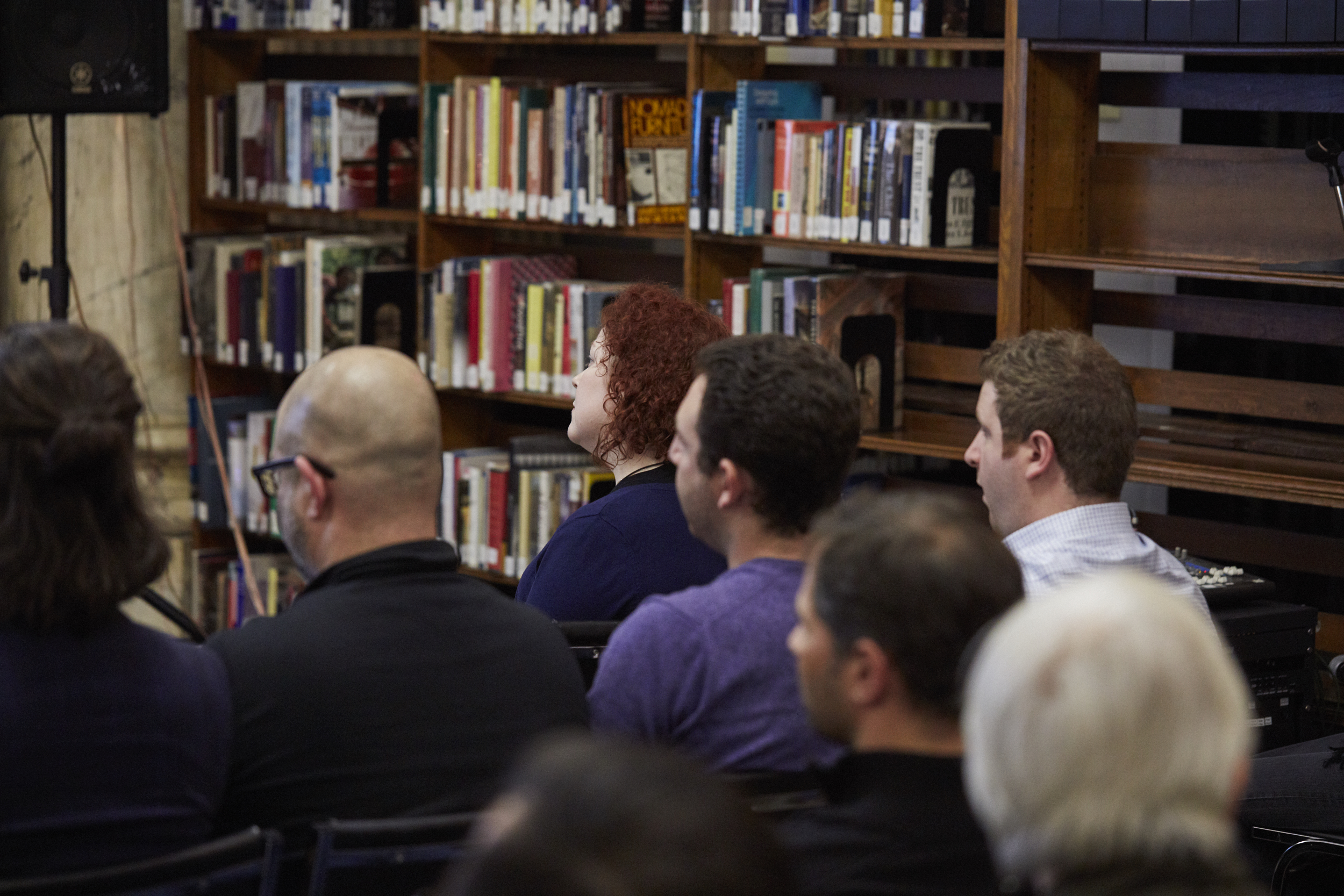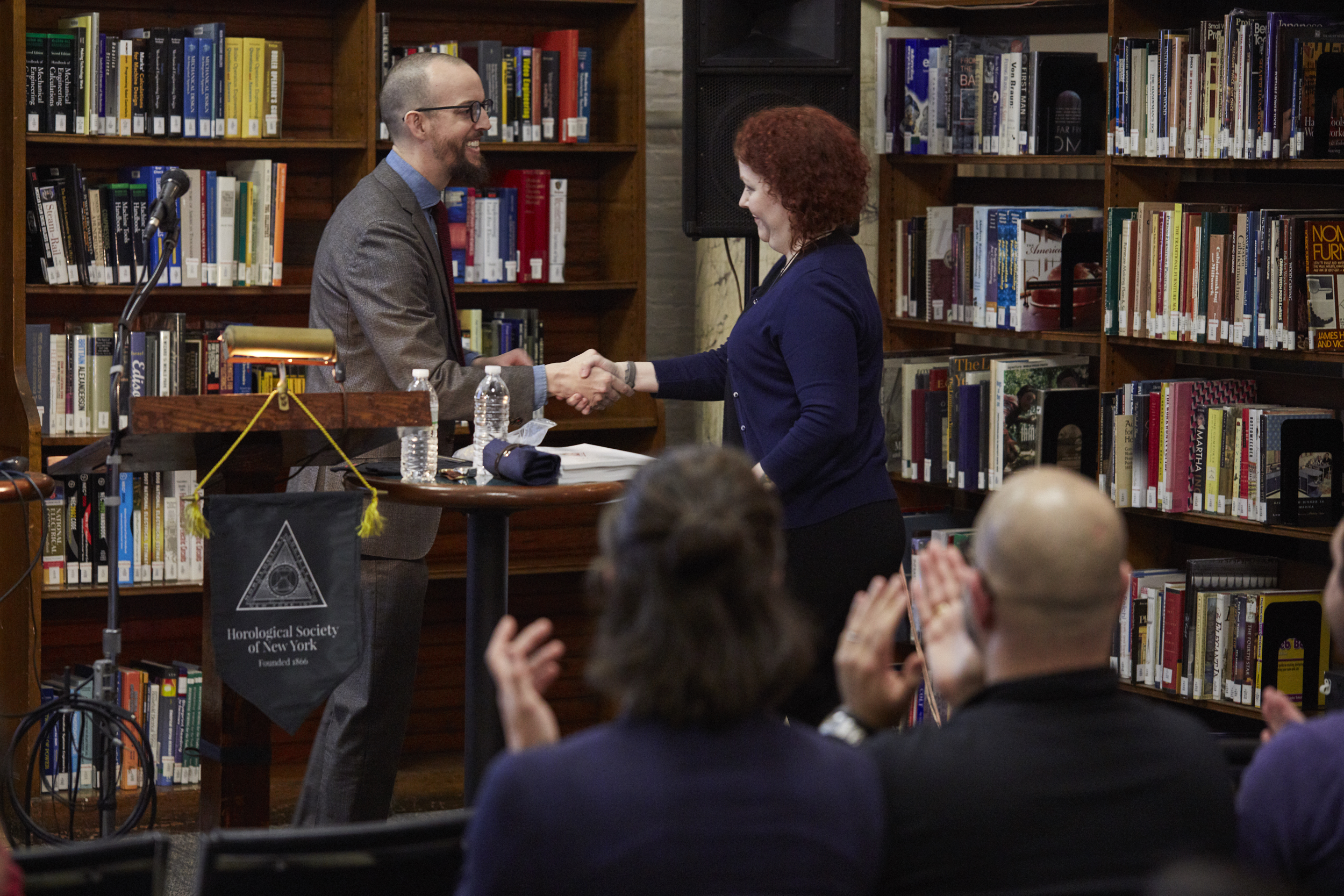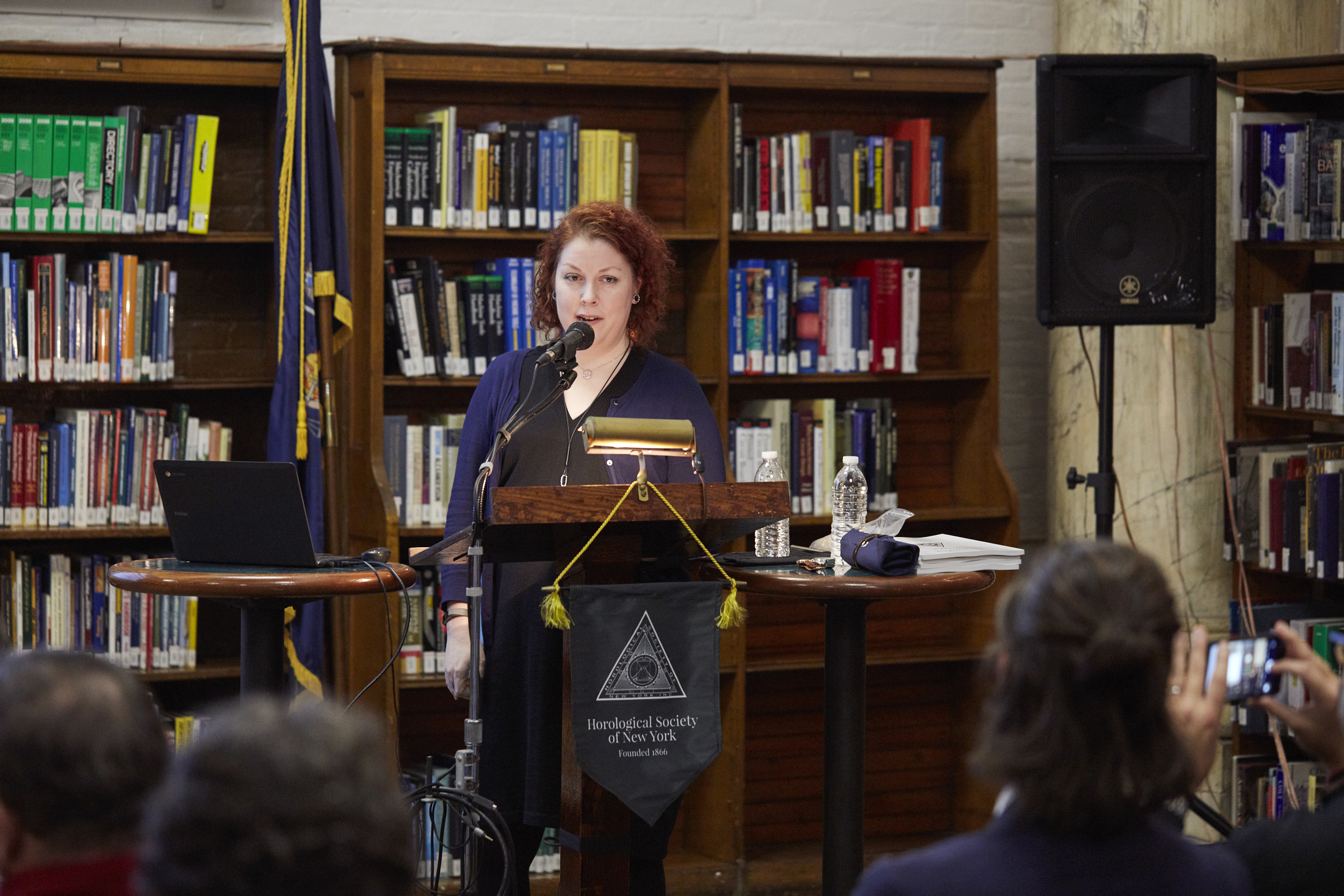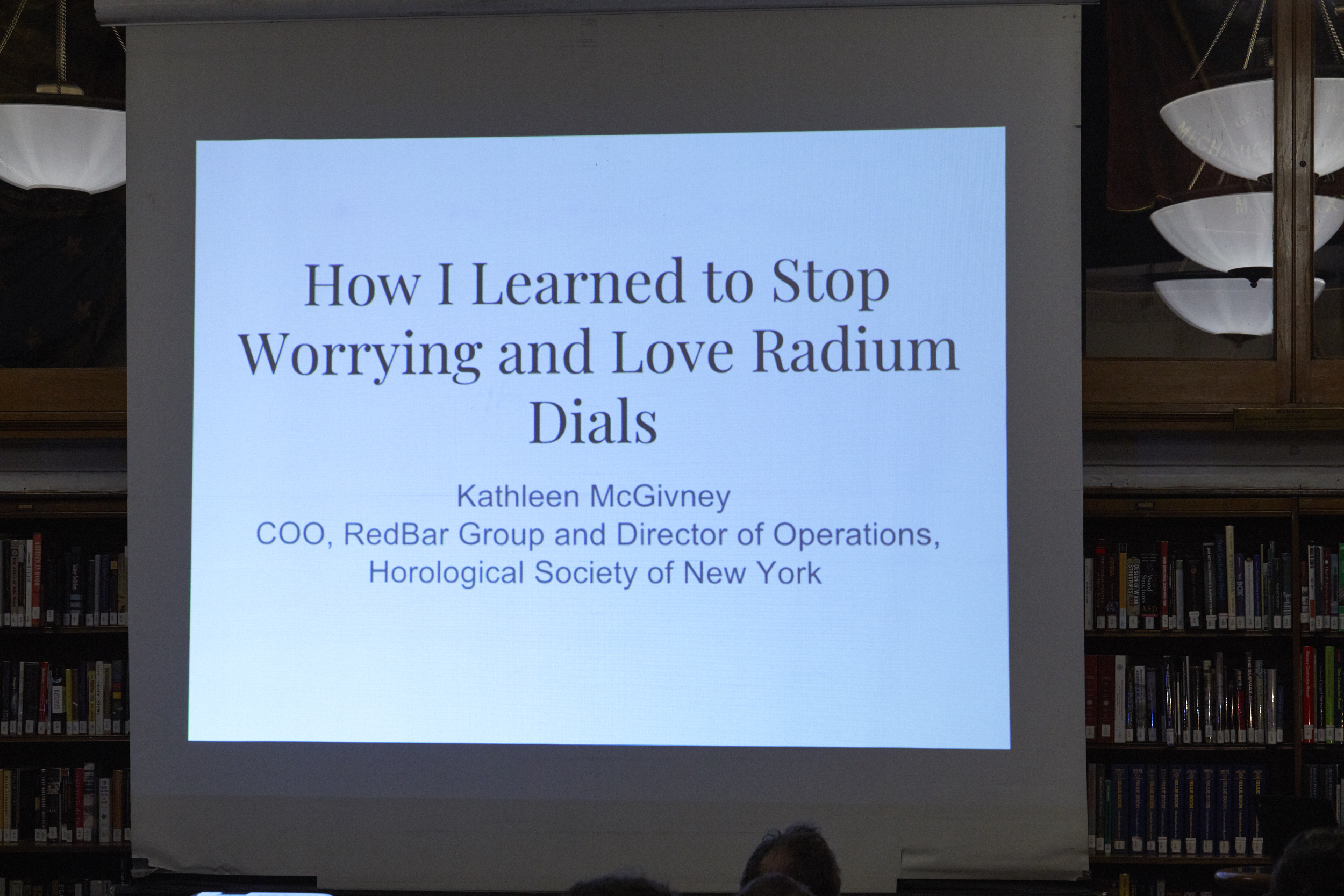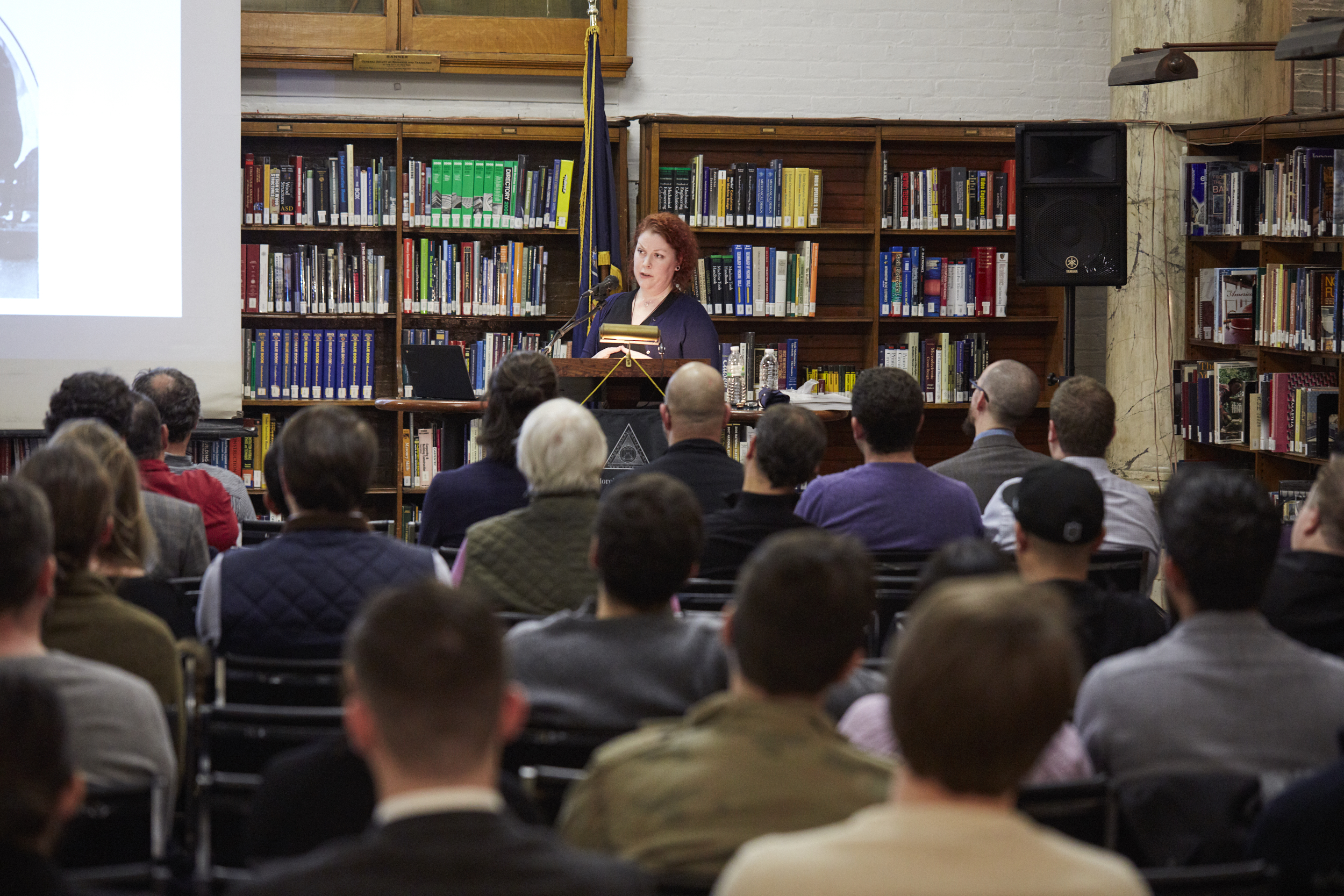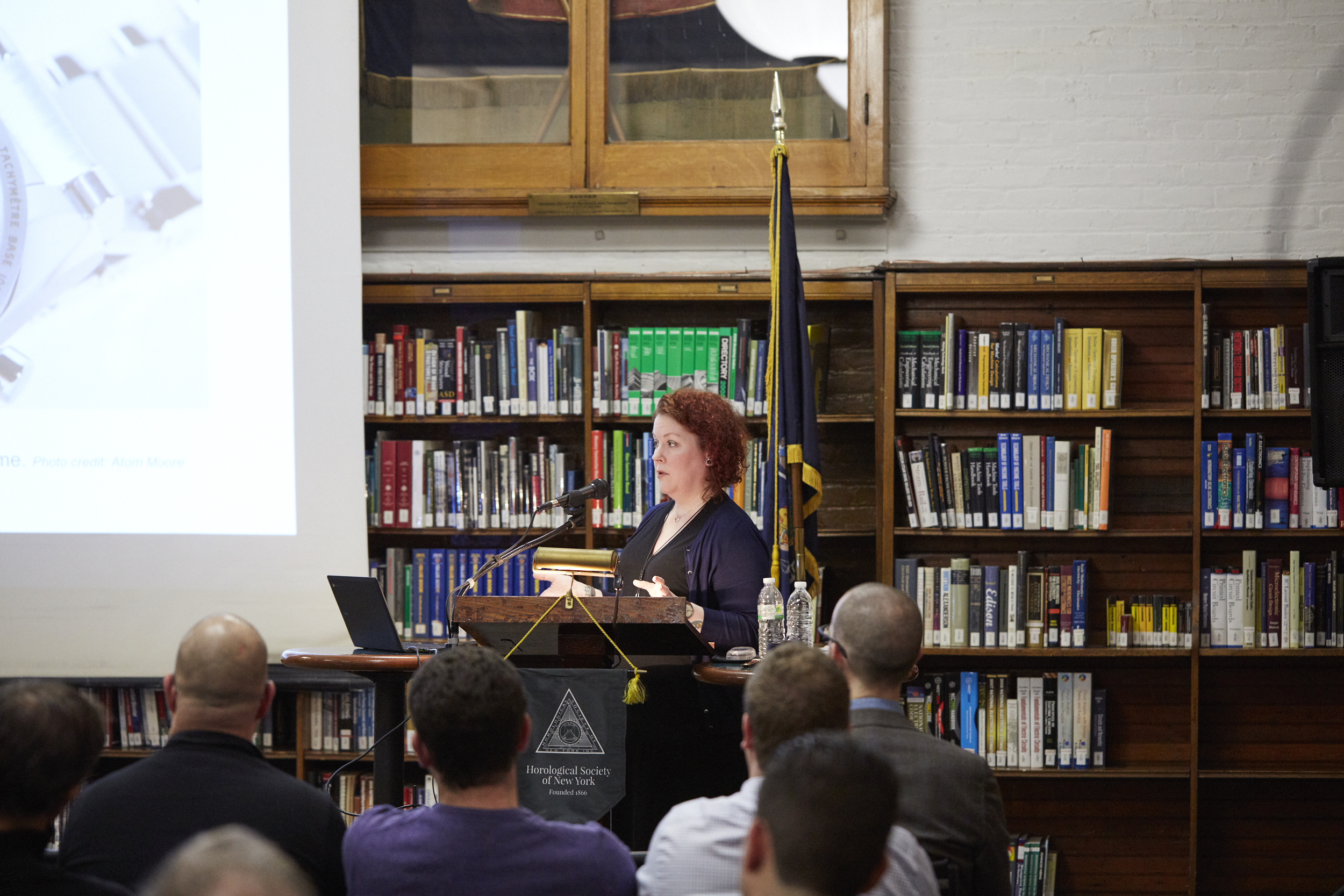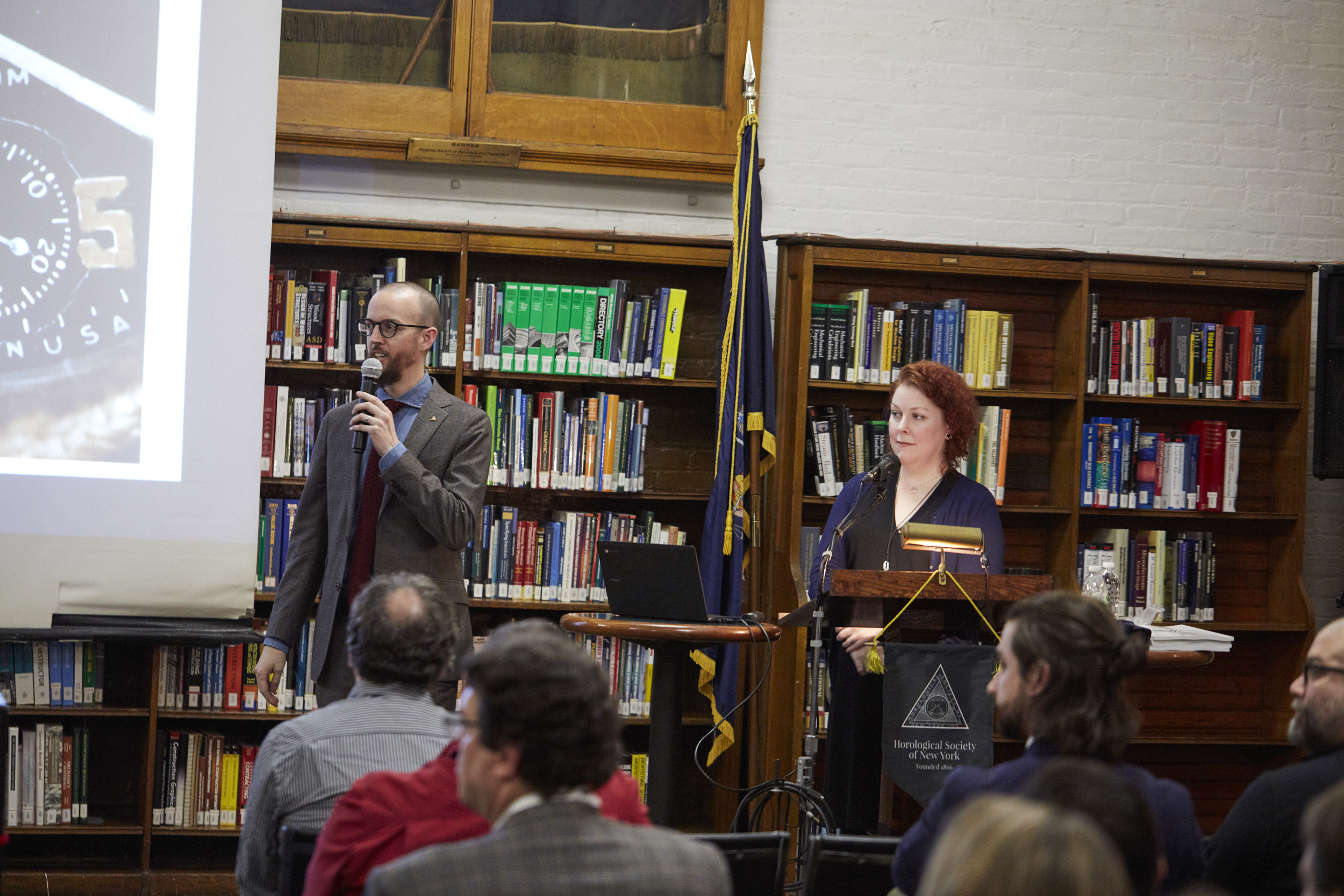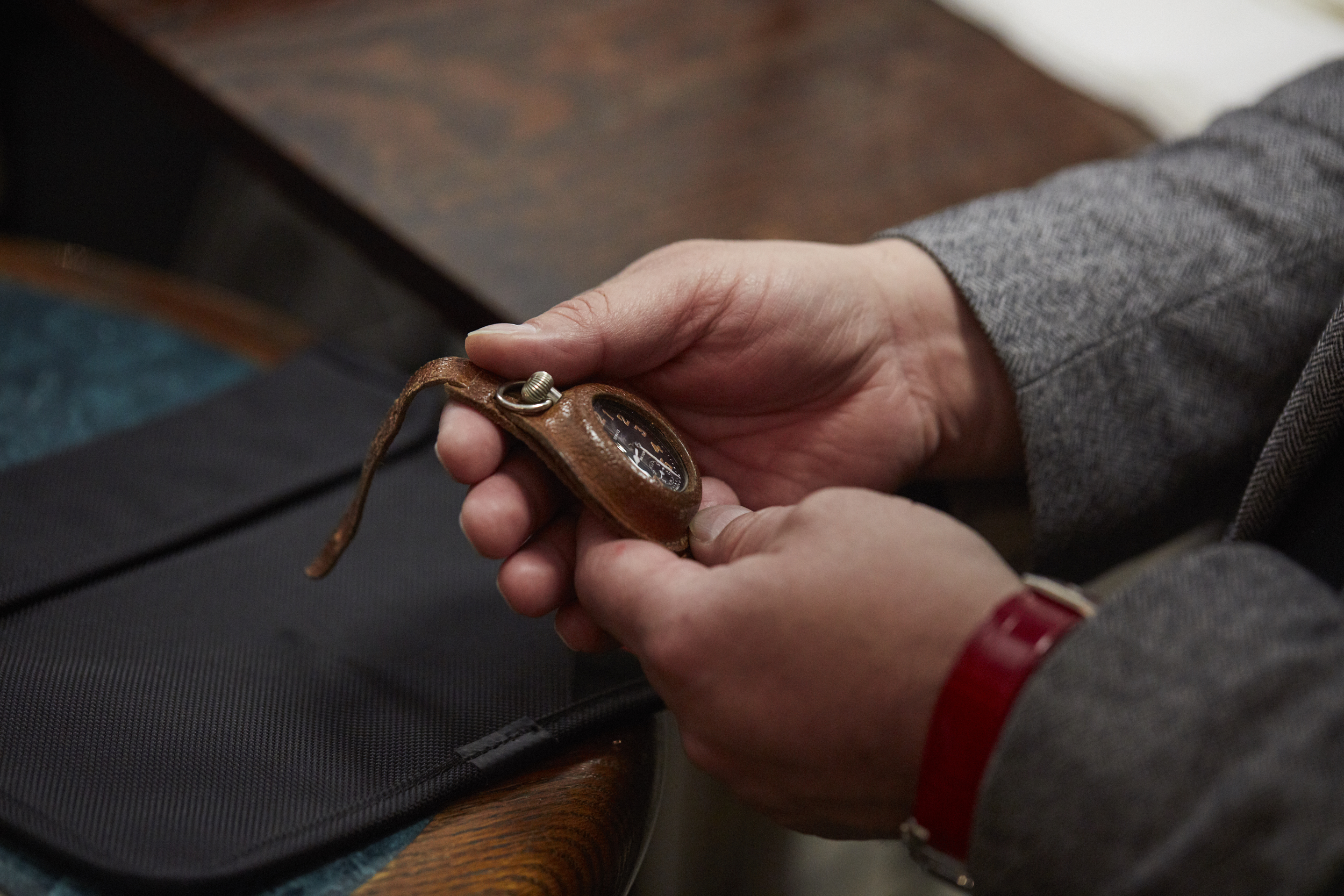Meeting Recap: How I Learned to Stop Worrying and Love Radium Dials
Kathleen McGivney, COO, RedBar Group and Director of Operations, Horological Society of New York
November 7, 2017
Video recordings of meetings are available to HSNY members.
Many watch collectors own watches with radium dials - even seeking them out specifically. But do these watches present any dangers to the collectors who wear them? In her lecture to the Horological Society of New York on November 7, 2017, HSNY's Director of Operations and Red Bar's COO Kathleen McGivney delved into the history of radium dials and answered those pressing questions.
Radioluminescence, the process by which light is produced by bombarding a reactive material with ionizing radiation, was widely used as the demand for watches that were readable at night grew. Radium, discovered by the Curies (who coined the term “radioactivity”) in the 1890s, was ideal for that use due to its radioluminescent properties. Also, since radium was viewed at the time to have medicinal benefits (even touted to cure arthritis and high blood pressure), its potential deleterious effects were ignored… to deadly effect.
Starting in the 1910s, thousands of young women began working at factories devoted to producing watches with radium dials. They would dip their camelhair brushes into a solution of radium, and then moisten the tip of the brushes between their lips to give them a finer point. The “Radium Girls” churned out dials, knowing that the watches they painted would adorn the wrists of soldiers fighting “over there” in the First World War.
By the 1920s, the Radium Girls began to fall ill and die of wasting diseases that doctors attributed to their ingestion of the element, eventually filing lawsuits which led to the establishment of OSHA. Which brings us to the present day: since the watch industry used radium until well into the 1950s, many watches with radium dials survive. Are these watches dangerous to handle or wear? The short answer is no.
McGivney shared videos of readings she took with a Geiger counter from watches with radium dials. While all emitted some radioactivity, McGivney concluded that the exposure was not enough to harm the people who wear them. However, McGivney recommended that collectors store these watches in lead-lined pouches.
HSNY thanks Kathleen McGivney for her fascinating lecture!
Submitted by Christa Chance, Recording Secretary, HSNY

